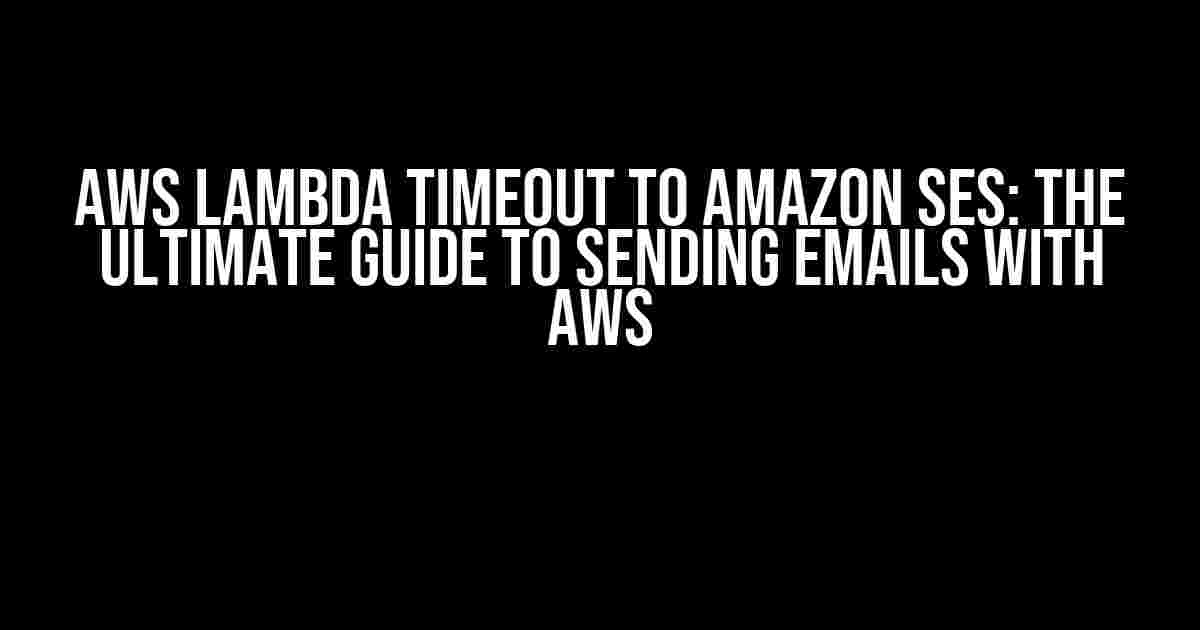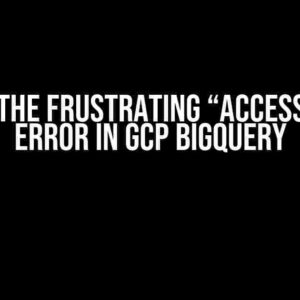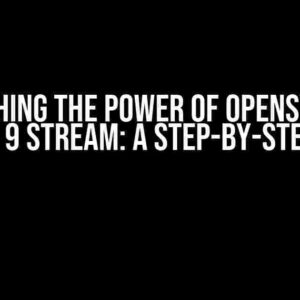Are you tired of dealing with email sending issues in your AWS Lambda functions? Do you find yourself stuck with timeout errors and wondering how to overcome them? Look no further! In this comprehensive guide, we’ll dive into the world of AWS Lambda and Amazon SES, and show you how to overcome the dreaded AWS Lambda timeout to send emails like a pro.
What is AWS Lambda?
AWS Lambda is a serverless computing service provided by Amazon Web Services (AWS). It allows developers to run code without provisioning or managing servers, making it a popular choice for building event-driven applications. With AWS Lambda, you can write and execute code in response to events, such as changes to an Amazon S3 bucket or an Amazon API Gateway API.
What is Amazon SES?
Amazon Simple Email Service (SES) is a cloud-based email service provided by AWS. It allows developers to send and receive emails programmatically, making it a popular choice for building email-driven applications. With Amazon SES, you can send emails to customers, validate email addresses, and track email metrics.
The Problem: AWS Lambda Timeout to Amazon SES
One of the most common issues when using AWS Lambda and Amazon SES is the dreaded timeout error. This occurs when your Lambda function takes too long to execute, causing the function to timeout and fail to send the email. This can be frustrating, especially when you’ve spent hours crafting the perfect email template.
Why Does the Timeout Error Occur?
There are several reasons why the timeout error occurs when sending emails with AWS Lambda and Amazon SES:
- Network connectivity issues between Lambda and SES
- Large payload sizes or attachments
- SES throttling or rate limiting
- Lambda function execution time exceeding the timeout limit
Solution 1: Increase the Lambda Function Timeout
One of the simplest solutions is to increase the timeout limit of your Lambda function. By default, the timeout limit is set to 3 seconds. However, you can increase this limit up to 15 minutes.
exports.handler = async (event) => {
// Increase the timeout limit to 1 minute
context setTimeout(() => {
callback(new Error('Timeout error'));
}, 60000);
// Send email using Amazon SES
const ses = new AWS.SES({ region: 'your-region' });
const params = {
Source: '[email protected]',
Destination: {
ToAddresses: ['[email protected]'],
CcAddresses: [],
BccAddresses: []
},
Message: {
Body: {
Text: {
Data: 'Hello, world!'
}
},
Subject: {
Data: 'Test email from AWS Lambda'
}
}
};
ses.sendEmail(params, (err, data) => {
if (err) {
console.log(err);
callback(err);
} else {
callback(null, data);
}
});
};
Solution 2: Use AWS SES Bulk Send API
Another solution is to use the AWS SES Bulk Send API. This API allows you to send a large number of emails in a single API call, reducing the likelihood of timeouts.
const AWS = require('aws-sdk');
const ses = new AWS.SES({ region: 'your-region' });
const bulkEmails = [
{
Source: '[email protected]',
Destination: {
ToAddresses: ['[email protected]'],
CcAddresses: [],
BccAddresses: []
},
Message: {
Body: {
Text: {
Data: 'Hello, world!'
}
},
Subject: {
Data: 'Test email from AWS Lambda'
}
}
},
{
Source: '[email protected]',
Destination: {
ToAddresses: ['[email protected]'],
CcAddresses: [],
BccAddresses: []
},
Message: {
Body: {
Text: {
Data: 'Hello, world!'
}
},
Subject: {
Data: 'Test email from AWS Lambda'
}
}
}
];
ses.sendBulkTemplatedEmail({
Source: '[email protected]',
Template: 'your-template-name',
Destinations: bulkEmails,
DefaultTemplateData: '{}'
}).promise().then((data) => {
console.log(data);
}).catch((err) => {
console.log(err);
});
Solution 3: Use an External Email Service
If you’re experiencing frequent timeouts, you may want to consider using an external email service. Services like SendGrid, Mailgun, or SparkPost provide robust email infrastructure and APIs that can handle large volumes of emails.
| Service | Free Plan | Pricing |
|---|---|---|
| SendGrid | 100 emails/day | $9.95/month (100,000 emails) |
| Mailgun | 10,000 emails/month | $7/month (10,000 emails) |
| SparkPost | 500 emails/month | $20/month (10,000 emails) |
Best Practices for Sending Emails with AWS Lambda and Amazon SES
To avoid timeouts and ensure successful email delivery, follow these best practices:
- Use a robust email service (e.g., Amazon SES, SendGrid, Mailgun)
- Optimize your email content and reduce payload sizes
- Use asynchronous email sending (e.g., AWS Lambda, Celery)
- Monitor and analyze your email metrics (e.g., open rates, bounce rates)
- Implement retries and exponential backoff for failed email sends
- Use an external email service for large volumes of emails
Conclusion
In this comprehensive guide, we’ve covered the AWS Lambda timeout to Amazon SES and provided three solutions to overcome it. By following best practices and using robust email services, you can ensure successful email delivery and avoid the dreaded timeout error. Remember to optimize your email content, use asynchronous email sending, and monitor your email metrics to improve your email sending workflow.
Happy emailing with AWS Lambda and Amazon SES!
Frequently Asked Question
Get the lowdown on AWS Lambda timeout to Amazon SES with these frequently asked questions!
What is the default timeout for an AWS Lambda function when sending an email using Amazon SES?
The default timeout for an AWS Lambda function is 3 seconds, but it can be extended up to 15 minutes. However, when using Amazon SES, it’s recommended to set a longer timeout to ensure that your function has enough time to process the request and handle any potential retries.
How do I increase the timeout for my AWS Lambda function when sending an email using Amazon SES?
You can increase the timeout for your AWS Lambda function by updating the function’s configuration in the AWS Lambda console or using the AWS CLI. Simply set the `Timeout` property to a value between 1 second and 15 minutes, depending on your specific requirements.
What happens if my AWS Lambda function times out when sending an email using Amazon SES?
If your AWS Lambda function times out when sending an email using Amazon SES, the function will be terminated, and the email will not be sent. However, you can configure your function to retry the email send operation using a dead-letter queue or an SQS queue to ensure that the email is eventually sent.
Can I use an async invocation to send an email using Amazon SES from my AWS Lambda function?
Yes, you can use an async invocation to send an email using Amazon SES from your AWS Lambda function. This allows your function to return a response to the client immediately, while the email send operation is processed in the background. This approach can help improve the performance and responsiveness of your application.
How do I handle errors when sending an email using Amazon SES from my AWS Lambda function?
You can handle errors when sending an email using Amazon SES from your AWS Lambda function by catching and logging any exceptions that occur during the email send operation. You can also use a try-catch block to handle specific errors, such as bounced emails or throttling errors, and implement retry logic to ensure that the email is eventually sent.






